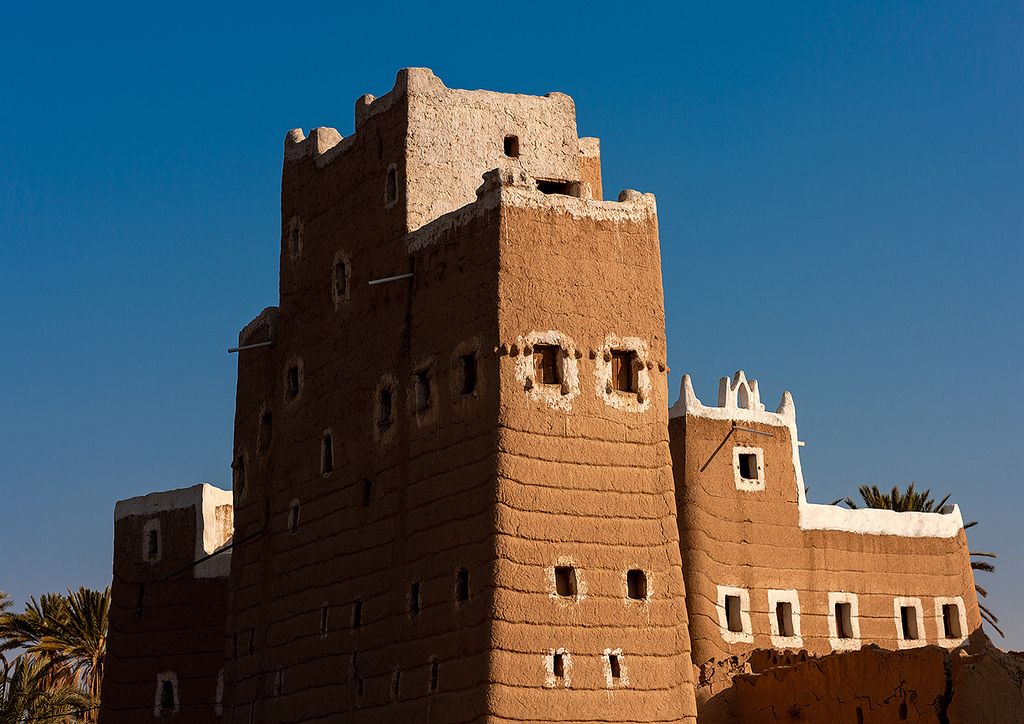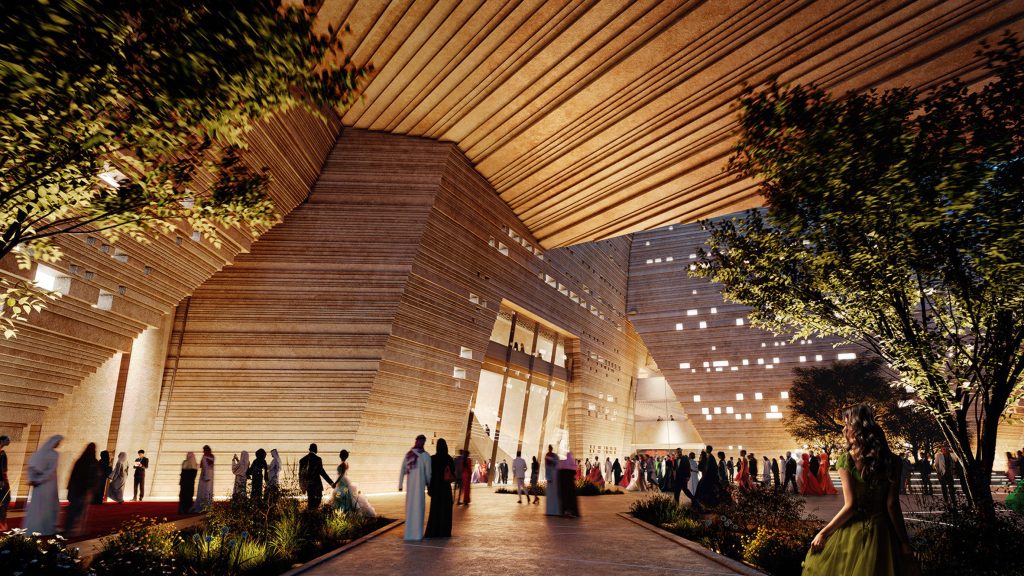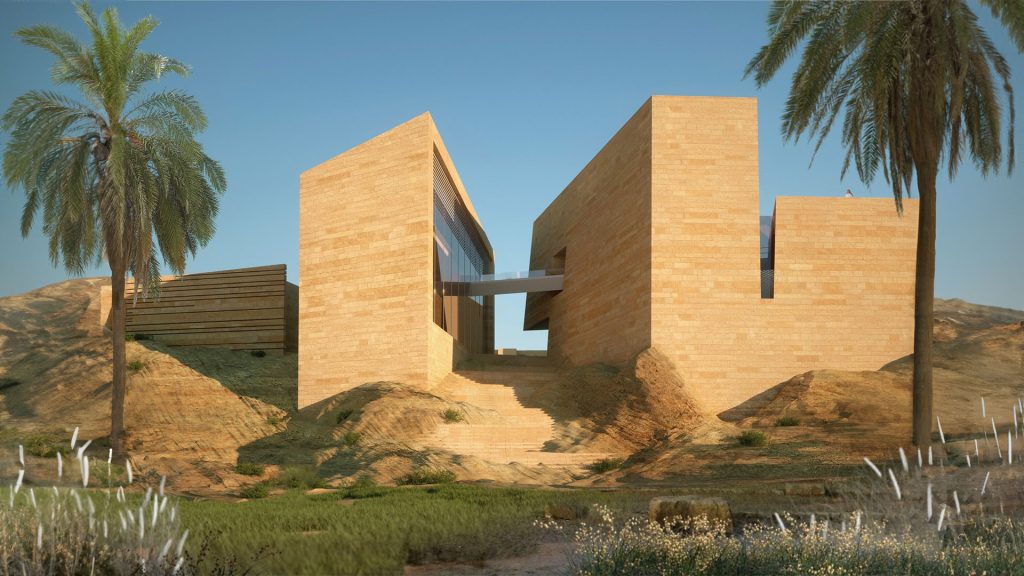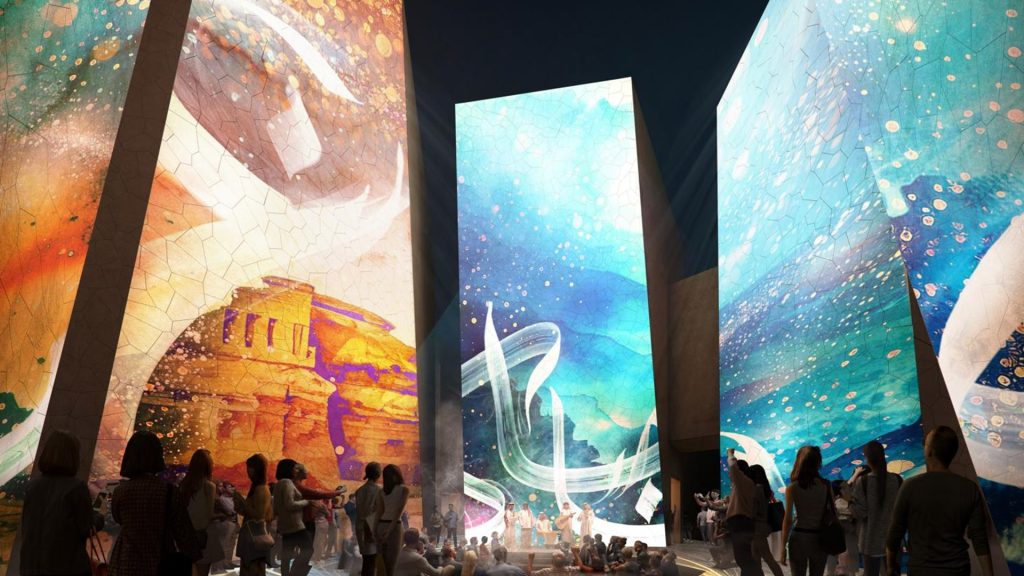Introduction
Embark on a captivating journey where tradition meets innovation in our blog, ‘Vernacular Mud-Brick Architecture Inspires Saudi Arabian Opera House Design’. Discover how ancient architectural roots intertwine with modern vision, shaping a cultural masterpiece that celebrates heritage, sustainability, and the rich tapestry of Saudi Arabian identity.
Table of Contents
Historical Roots of Vernacular Mud-Brick Architecture in Saudi Arabia
Traditional mud-brick architecture in Saudi Arabia boasts a rich history dating back centuries, a testament to the enduring legacy of cultural practices deeply intertwined with the region’s unique environment. The use of mud as a primary building material is rooted in practicality and resourcefulness, reflecting the scarcity of other construction materials in the arid landscape. Mud-brick structures, known locally as ‘qasr’ or ‘kasr’, have become emblematic of the architectural identity of Saudi Arabia.

The cultural significance lies in its ability to provide shelter that aligns harmoniously with the harsh desert climate. The thick walls of mud-brick buildings offer natural insulation, keeping interiors cool in the scorching heat and providing warmth during cooler nights. This architectural adaptation to the environment showcases the ingenuity of the region’s inhabitants in creating structures that not only withstand the climate but also celebrate the unique characteristics of the landscape.
Moreover, the intricate designs and patterns tell stories of cultural heritage and craftsmanship. Skilled artisans incorporate geometric motifs, calligraphy, and other symbolic elements into the architecture, creating a visual language that reflects the identity, beliefs, and traditions of the community. These structures serve as living artifacts, connecting the present generation with the cultural roots of their ancestors.
In addition to its cultural significance, mud-brick architecture in Saudi Arabia embodies sustainability principles. The use of locally sourced mud and other natural materials reduces the environmental impact of construction. The eco-friendly nature of mud-brick buildings aligns with contemporary efforts to promote sustainable architecture, making them a source of inspiration for modern designers seeking environmentally conscious solutions.
Modern Interpretations: Incorporating Mud-Brick Aesthetics in Contemporary Design

Contemporary architects and designers, recognizing the intrinsic value of traditional mud-brick structures in Saudi Arabia, have embarked on a journey to weave the threads of heritage and modernity into the fabric of their designs. This fusion is evident in numerous buildings where the aesthetics of mud-brick architecture are seamlessly integrated, embodying a commitment to preserving cultural identity while embracing innovation.
One notable example is the King Abdulaziz Center for World Culture in Dhahran. Designed by the Norwegian architectural firm Snøhetta, the center features a modern interpretation of mud-brick aesthetics. The exterior showcases a series of interconnected, hexagonal structures reminiscent of traditional mud-brick patterns. The architects have successfully captured the essence of Saudi heritage while employing contemporary materials and construction techniques to create a visually striking and functional space.
Similarly, the Royal Academy for Nature Conservation in Abha pays homage to mud-brick architecture. The building, designed by the renowned architect Zaha Hadid, incorporates traditional design elements in a modern context. The undulating curves of the structure mimic the organic forms found in traditional mud-brick buildings, offering a nod to the region’s architectural history while pushing the boundaries of contemporary design.
These examples underscore a broader trend in contemporary Saudi architecture, where architects are not merely replicating the past but engaging in a dialogue between tradition and innovation. The integration of mud-brick aesthetics serves as a bridge between the rich cultural heritage of the region and the demands of a rapidly evolving society.
The Vision Behind the Theatre Design Architecture
The design of the Royal Diriyah Opera House in Saudi Arabia, also conceived by Snøhetta, is a testament to the meticulous fusion of tradition and modernity, paying homage to the region’s cultural heritage while embracing contemporary vision. Informed by the traditional Najdi architecture style of the historic town of Diriyah, the opera house is envisioned as a cultural landmark that not only accommodates 3,500 visitors but also encapsulates the essence of Saudi Arabia’s rich architectural legacy.
Snøhetta’s design draws inspiration from the vernacular Najdi architecture style, characterized by mud-brick structures nestled closely together to provide shade. The cluster of buildings forming the opera house features textured facades constructed from palm, stone, and earth, echoing the materials historically prevalent in the region. The architects aim to evoke a sense of connection between the site’s rich history and the contemporary cultural landscape.
The design narrative is deeply rooted in the surroundings, with influences from the nearby riverbeds of the Wadi Hanifah Valley. The choice of materials, such as earth from the riverbeds, symbolizes the transformative journey that the architecture undergoes, mirroring the way mud cracks in the sun, is molded by wind and rain, and then reshapes into separate forms. This concept is manifested in the cluster of buildings that seem to rise organically from the ground, with open passages inviting exploration.
The Royal Diriyah Opera House is not merely a performance venue; it aspires to be a cultural bridge, connecting the historical narrative with contemporary aspirations. Beyond the opera theatres, the inclusion of public spaces, cafe, retail spaces, and shaded outdoor areas further enhances the holistic experience. By seamlessly integrating these elements, Snøhetta’s design enriches both cultural and recreational encounters, underlining the importance of the arts in shaping the future of communities. As the project aims for completion in 2028, it represents a forward-looking vision that celebrates the beauty of traditional design elements within a thoroughly modern context.

Sustainable Design Practices: Lessons from Mud-Brick Architecture
The sustainable aspects of mud-brick architecture, deeply rooted in centuries-old practices, are brought to the forefront in the construction of the Royal Diriyah Opera House. Snøhetta’s design not only pays homage to tradition but also embraces environmentally conscious principles, contributing to a more sustainable and eco-friendly structure.
One of the key environmental benefits of mud-brick architecture lies in its natural insulation properties. Mud-brick structures, with their thick walls, act as excellent insulators, helping to regulate indoor temperatures in response to the extreme climatic conditions of the Saudi Arabian desert. The use of mud as a building material provides a thermal mass that absorbs heat during the day and releases it slowly at night, creating a comfortable and energy-efficient environment for the opera house.
Furthermore, the opera house’s commitment to sustainability is evident in the choice of locally sourced materials. By utilizing palm, stone, and earth from the nearby riverbeds of the Wadi Hanifah Valley, the architects reduce the carbon footprint associated with transportation and extraction of materials. This not only supports the local economy but also minimizes the environmental impact of the construction process.
Traditional techniques play a pivotal role in the sustainable design. The architects draw inspiration from the age-old practices of mud-brick construction, integrating them into a contemporary context. The use of earth from riverbeds, molded by natural elements, mirrors the sustainable cycle inherent in traditional mud-brick architecture. This approach is a testament to the architects’ commitment to not only preserving cultural heritage but also promoting environmentally responsible building practices.
Cultural Impact: Fostering Connection and Pride through Architecture
The Saudi Arabian Opera House, with its incorporation of vernacular mud-brick elements, emerges not merely as a performance venue but as a cultural cornerstone with profound implications for the local community and beyond. This architectural marvel acts as a catalyst, fostering a sense of connection to heritage, instilling pride, and deepening the appreciation for Saudi Arabian culture.
The integration of mud-brick elements in the opera house design is a deliberate homage to the cultural heritage of Saudi Arabia. The architectural language speaks to the traditions of the region, echoing the aesthetic beauty of mud-brick structures that have defined the landscape for centuries. As a result, the local community witnesses their cultural legacy seamlessly interwoven into a contemporary space, creating a bridge between the past and the present.
The opera house serves as more than a venue for artistic performances; it becomes a cultural hub, a gathering place where the community can celebrate its identity. The incorporation of traditional elements fosters a shared sense of belonging and pride, as residents see aspects of their heritage reflected in a space dedicated to the arts. This connection to cultural roots instills a deeper appreciation for the rich tapestry of Saudi Arabian traditions, fostering a collective identity that extends beyond the walls of the opera house.
Moreover, it stands as a symbol of architectural innovation rooted in tradition. It showcases that modernity and cultural heritage can coexist harmoniously, challenging the perception of a cultural divide between tradition and progress. The opera house becomes an emblem of the nation’s commitment to preserving its identity while embracing contemporary advancements, setting a precedent for how architectural innovation can be deeply rooted in cultural context.
Conclusion
As we conclude our exploration, the Saudi Arabian Opera House stands as a testament to the harmonious blend of tradition and contemporary vision. Through mud-brick inspiration, it not only preserves cultural roots but also propels Saudi Arabia into a future where architectural innovation resonates with a proud and enduring heritage.



